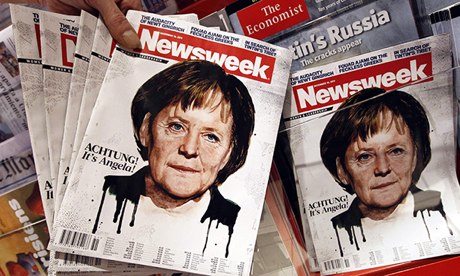Is reality becoming more real? The rise and rise of UGC
Sara Mills explores the rise of the citizen journalist and considers the impact of user-generated content on news stories, the news agenda, and the role of the professionals.
Once, it was all quite simple…the big institutions created the news and broadcast it to a variously passive and receptive audience. Now new technologies mean that the audience are no longer passive receivers of news. The audience have become ‘users’ and the users have become publishers. Audiences now create their own content. We are in the era of user generated content (UGC) where the old divide between institution and audience is being eroded.
Key to this change has been the development of new technologies such as video phones and the growth of the internet and user-dominated sites. Both who makes the news and what makes the news have been radically altered by this growth of media technologies and the rise of the ‘citizen journalist’.
We first felt the effects of the new technologies way back in 1991. Video cameras had become more common and more people could afford them…unfortunately for four Los Angeles police officers! Having caught Rodney King, an African-American, after a high speed chase, the officers surrounded him, tasered him and beat him with clubs. The event was filmed by an onlooker from his apartment window. The home-video footage made prime-time news and became an international media sensation, and a focus for complaints about police racism towards African-Americans. Four officers were charged with assault and use of excessive force, but in 1992 they were acquitted of the charges. This acquittal, in the face of the video footage which clearly showed the beatings, sparked huge civil unrest. There were six days of riots, 53 people died, and around 4000 people were injured. The costs of the damage, looting and clear-up came in at up to a billion dollars. If George Holliday hadn’t been looking out of his apartment window and made a grab for his video camera at the time Rodney King was apprehended, none of this would have happened. King’s beating would be just another hidden incident with no consequences. The film footage can be still be viewed. Try looking on YouTube under ‘What started the LA riots.’ But be warned – it makes for very uncomfortable viewing, and even today, it is easy to see why this minute and half of blurry, poor-quality film had such a huge impact.
This was one of the first examples of the news being generated by ‘ordinary people,’ now commonly known as ‘citizen journalists’, ‘grassroots journalists’, or even ‘accidental journalists’. As technology improved over the years, incidents of this kind have become more and more common. Millions of people have constant access to filming capability through their mobiles, and footage can be uploaded and rapidly distributed on the internet. The power to make and break news has moved beyond the traditional news institutions.
It is not only in providing footage for the news that citizen journalists have come to the forefront. UGC now plays a huge role in many aspects of the media. Most news organisations include formats for participation: message boards, chat rooms, Q&A, polls, have your says, and blogs with comments enabled. Social media sites are also built around UGC as seen in the four biggest social networking sites: Bebo, MySpace, YouTube and Facebook. People also turn to UGC sites to access news: Wikipedia news, Google news and YouTube score highly in terms of where people go to get their news.
The natural disaster of the Asian Tsunami on December 26th 2004 was another turning point for UGC. Much of the early footage of events was provided from citizen journalists, or ‘accidental journalists,’ providing on-the-spot witness accounts of events as they unfolded. Tourists who would otherwise have been happily filming holiday moments were suddenly recording one of the worst natural disasters in recent times. In addition, in the days after the disaster, social networking sites provided witness accounts for a world-wide audience, helped survivors and family members get in touch and acted as a forum all those involved to share their experiences.
A second terrible event, the London bombings on July 5th 2005, provided another opportunity for citizen journalists to influence the mainstream news agenda. No one was closer to events than those caught up in the bombings, and the footage they provided from their mobile phones was raw and uncompromising. This first-hand view, rather than professionally shot footage from behind police lines, is often more hard-hitting and emotive. An audience used to relatively unmediated reality through the prevalence of reality TV can now see similarly unmediated footage on the news.
The desire for everyone to tell their own story and have their own moment of fame may explain the huge popularity of Facebook, MySpace and other such sites. It also had a more negative outcome in the package of writings, photos and video footage that 23-year-old Seung-Hui Cho, an undergraduate at Virginia Tech, mailed into NBC News. Between his first attack, when he shot two people, he sent the package from a local post office, before going on to kill a further 30 people. In his so-called ‘manifesto’ Cho showed his paranoia and obsession, likening himself to Jesus Christ. The reporting of the terrible events at Virginia Tech that day was also affected by citizen journalism, and the footage that student Jamal Albarghouti shot on his mobile phone video camera. Rather than concentrate on saving his own life, he recorded events from his position lying on the ground near the firing. The footage, available on YouTube and CNN brought events home to a worldwide audience. We now expect passers by, witnesses, or even victims, to whip out their camera phones and record events, an instinct almost as powerful as that to save their own or others’ lives. Perhaps the news now seems old-fashioned and somehow staged if it lacks the raw, grainy low-quality footage provided by citizen journalists.
Twitter and flickr came to the forefront during the Mumbai bombings in India in late November 2008. As bombs exploded across the city, the world’s media got up-to date with events through reports on Twitter and Flickr. There were questions raised, however, that by broadcasting their tweets, people may have been putting their own and others’ lives at risk.
It was on Twitter again that the story of the Hudson River plane crash on January 15th 2009 was broken to the world. With a dramatic picture of a plane half sinking in the river, and passengers crowded on the wing awaiting rescue Janis Krun tweeted:
There’s a plane in the Hudson. I’m on the ferry going to pick up the people. Crazy.
The picture is still available on Twitpic, under ‘Janis Krun’s tweet.’ While national news organisations quickly swung into action, it was the citizen journalist, empowered by social networking sites, that first broke the story.
So who’s keeping the gate?
Are the gatekeepers still fulfilling their old function of deciding what is and isn’t news, and what will and won’t be broadcast? In some ways, yes. You can send in as much UGC to the major news organisations as you want, with no guarantee that any of it will ever be aired. In fact, last year a BBC spokesperson reported that a large proportion of photos sent in to the news unit were of kittens. While this may represent the interest of the audience, or users, it still doesn’t turn the fact that your kitten is really cute into ‘news.’
The way around the gatekeepers is with the independent media on the web. The blogosphere, for example, provides an opportunity for independent, often minority and niche views and news to reach a wide audience. In fact uniting disparate people in ‘micro-communities’ is one of the web’s greatest abilities. How else would all those ice fans communicate without the ‘Ice Chewers Bulletin Board?’ And the only place for those who like to see pictures of dogs in bee costumes is, of course, ‘Beedogs.com: the premier online repository for pictures of dogs in bee costumes.’
On a more serious note, the change in the landscape of the news means that groups who had little access to self-representation before, such as youth groups, low income groups, and various minority groups may, through citizen journalism, begin to find that they too have a voice.
What about the professionals?
Do journalists fear for their jobs now everyone is producing content? It is likely that in future there will be fewer and fewer permanent trained staff at news organisations, leaving a smaller core staff who will manage and process UGC from citizen journalists, sometimes known as ‘crowd sourcing.’ Some believe that the mediators and moderators might eventually disappear too, leaving a world where the media is, finally, unmediated. This does raise concerns however. Without moderation sites could be overrun by bigots or fools, by those who shout loudest, and those who have little else to do but make posts The risk of being dominated by defamatory or racist or other hate-fuelled content raises questions about unmoderated content: ‘free speech’ is great as long as you agree with what everybody is saying!
If there will be fewer jobs for trained journalists, will there also be less profit for the big institutions? This seems unlikely. Although how to ‘monetarise’ UGC – how to make money for both the generator and the host of the content – is still being debated, bigger institutions have been buying up social networking sites for the last few years. Rather than launch their own challenge, they simply buy the site. Flickr is now owned by Yahoo!, YouTube was bought by Google, Microsoft invested in Facebook, and News Corp., owned by Murdoch, bought MySpace.
There is a whole new world out there. With it comes new responsibility. There is enormous potential to expand our view of the world and our understanding of what is happening. Our collective knowledge, and wisdom, should grow. On the other hand, in twenty years time, the news could be overrun by pictures of people’s kittens and a few bigots shouting across message boards at each other.
Sara Mills teaches Media Studies at Helston Community College, Cornwall, and is an AQA examiner.
This article first appeared in MediaMagazine 30, December 2009.



